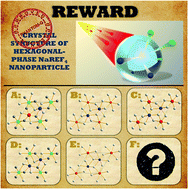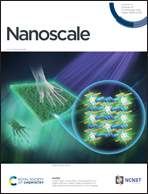Hexagonal-phase NaREF4 upconversion nanocrystals: the matter of crystal structure
Abstract
The hexagonal-phase (β) of NaREF4 upconversion nanocrystals (RE = rare earth elements) has been widely employed because of the outstanding luminescence performance, yet less is known about the essence of this superior property. The current understanding of this issue is raised from the advantage of weak electron–vibration interactions in fluoride systems, while the interpretability of this statement is controversial and contradictory results are commonly reported. One feasible way to solve this puzzle is from the aspect of “structure–property” relationship, yet even after decades of investigation, the structural details of β-NaREF4 are still under debate. Herein, the reported results relevant to this topic are reviewed, and the conflicting viewpoints are summarized. The similarities and differences between different lattice templates are assessed, and the reasons underlying the divergence are analysed. Based on these discussions, it is realized that the crystal structure of β-NaREF4 should be more reliably depicted as one flexible lattice framework with complex characteristics, and the structural disorder induced by atom displacements in the lattice is probably the key to supporting the superior luminescence properties of β-NaREF4 nanocrystals.

- This article is part of the themed collection: Recent Review Articles


 Please wait while we load your content...
Please wait while we load your content...